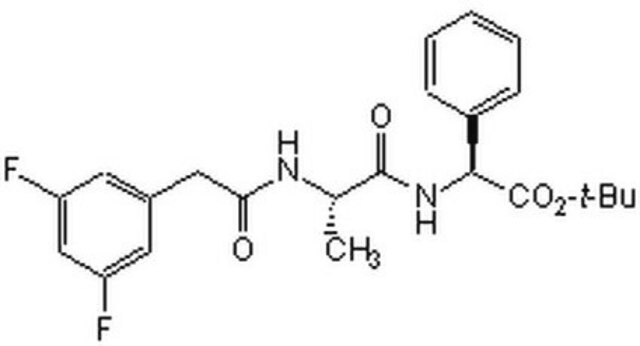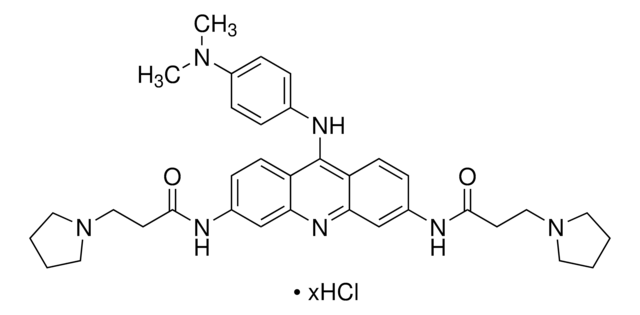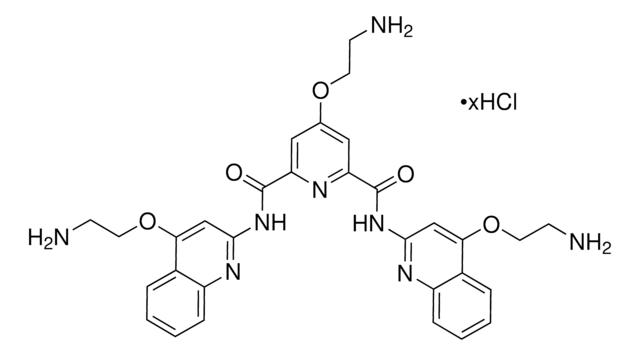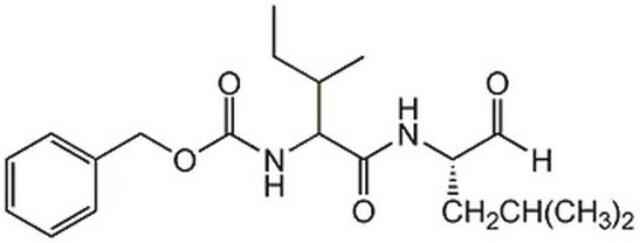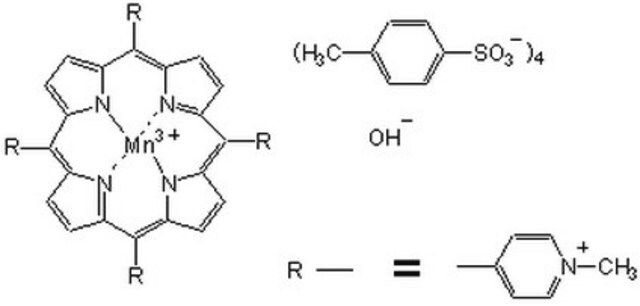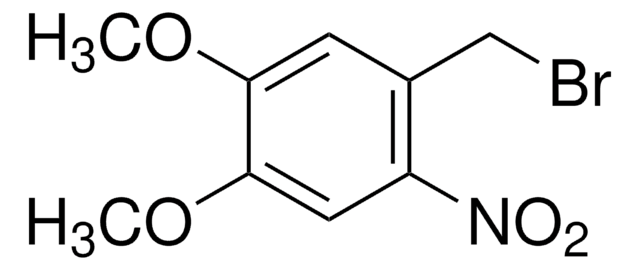613560
TMPyP4
≥90% (TLC), solid, telomerase inhibitor, Calbiochem®
Synonym(s):
TMPyP4, meso-5,10,15,20-Tetrakis-(N-methyl-4-pyridyl)porphine, Tetratosylate
About This Item
Recommended Products
Product Name
TMPyP4, A potent inhibitor of human telomerase (IC₅₀ = 6.5 µM).
Quality Level
Assay
≥90% (TLC)
form
solid
manufacturer/tradename
Calbiochem®
storage condition
OK to freeze
desiccated (hygroscopic)
protect from light
color
purple
solubility
water: 1 mg/mL
shipped in
ambient
storage temp.
2-8°C
InChI
1S/C44H37N8.4C7H8O3S/c1-49-21-13-29(14-22-49)41-33-5-7-35(45-33)42(30-15-23-50(2)24-16-30)37-9-11-39(47-37)44(32-19-27-52(4)28-20-32)40-12-10-38(48-40)43(36-8-6-34(41)46-36)31-17-25-51(3)26-18-31;4*1-6-2-4-7(5-3-6)11(8,9)10/h5-28H,1-4H3,(H,45,46,47,48);4*2-5H,1H3,(H,8,9,10)/q+3;;;;/p-3
InChI key
AKZFRMNXBLFDNN-UHFFFAOYSA-K
General description
Biochem/physiol Actions
Warning
Other Notes
Izbicka, E., et al. 1999. Cancer Res. 59, 639.
Anantha, N.V., et al. 1998. Biochemistry 37, 2709.
Arthanari, H., et al. 1998. Nucleic Acids Res. 26, 3724.
Wheelhouse, R.T., et al. 1998. J. Am. Chem. Soc. 120, 3261.
Legal Information
Storage Class Code
11 - Combustible Solids
WGK
WGK 3
Flash Point(F)
Not applicable
Flash Point(C)
Not applicable
Certificates of Analysis (COA)
Search for Certificates of Analysis (COA) by entering the products Lot/Batch Number. Lot and Batch Numbers can be found on a product’s label following the words ‘Lot’ or ‘Batch’.
Already Own This Product?
Find documentation for the products that you have recently purchased in the Document Library.
Customers Also Viewed
Our team of scientists has experience in all areas of research including Life Science, Material Science, Chemical Synthesis, Chromatography, Analytical and many others.
Contact Technical Service
